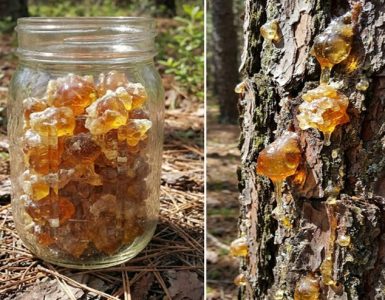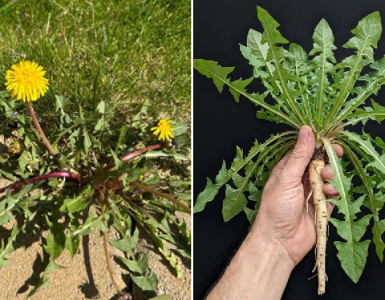Foxtail grass (Setaria species) is a common sight in backyards, fields, and gardens, often considered a pesky weed that invades lawns and gardens. With its characteristic bushy, tail-like seed heads, most people see it as little more than a nuisance. But what many don’t realize is that foxtail has hidden potential, and it offers surprising benefits for both humans and animals. Instead of throwing it away, consider how this plant can actually contribute to your health and the environment.
1.Nutritional Value for Livestock
One of the most significant benefits of foxtail grass is its use as fodder for livestock. Many species of foxtail, particularly the green foxtail (Setaria viridis), are excellent for grazing animals such as cattle, sheep, and goats. The plant provides a good source of fiber and essential nutrients, helping to maintain the health of grazing animals. In many parts of the world, foxtail is cultivated specifically as a forage crop due to its fast growth and adaptability to different soils.
Benefits for Livestock:
High Fiber Content: Aids in digestion and overall health of grazing animals.
Source of Nutrients: Provides essential minerals and vitamins for livestock.
Sustainable Fodder: Foxtail grows quickly and can be harvested multiple times in a season, making it a reliable source of food for animals.
2.Soil Health and Erosion Control
Foxtail grass has deep roots that help improve soil structure and prevent erosion. The plant is often one of the first species to grow in disturbed or poor-quality soil, making it a pioneer species in ecological restoration. Its root system helps bind the soil, preventing it from washing away during heavy rains or winds. Additionally, foxtail’s fast-growing nature allows it to cover bare soil quickly, helping to restore degraded landscapes.
Benefits for Soil:
Prevents Soil Erosion: The roots of foxtail help stabilize soil, reducing the risk of erosion.
Improves Soil Quality: By adding organic matter as it grows and decays, foxtail contributes to healthier soil over time.
Restores Disturbed Land: Foxtail is often used in reclamation projects to rehabilitate areas that have been disturbed or degraded.
3.Potential Medicinal Uses
In traditional medicine, foxtail grass has been used for various medicinal purposes, though it remains under-researched in modern medicine. Some cultures use it to treat minor wounds, reduce swelling, and aid digestion. While the scientific backing is still limited, the plant’s use in folk remedies suggests that it could hold untapped medicinal potential.
Traditional Uses:
Treating Wounds: The leaves of foxtail grass have been used in some cultures as a natural bandage or poultice to promote wound healing.
Digestive Aid: In some traditional practices, foxtail seeds or grasses are consumed to aid digestion.
Anti-Inflammatory: Some believe foxtail extracts can help reduce inflammation, though more research is needed to confirm this.
4.Edible Seeds
While often overlooked, some species of foxtail produce edible seeds that have been used as a food source in various cultures for thousands of years. The seeds of the green foxtail (Setaria viridis) and the yellow foxtail (Setaria pumila) can be ground into flour or cooked like grains, similar to millet. The seeds are rich in carbohydrates, fiber, and essential nutrients, making them a sustainable food source in times of scarcity.
Benefits of Edible Seeds:
Rich in Nutrients: Foxtail seeds provide a good source of carbohydrates, fiber, and protein.
Versatile in Cooking: The seeds can be ground into flour for baking or cooked as a grain, much like quinoa or millet.
Ancient Food Source: Foxtail seeds have been used historically in several cultures for food, particularly in Asia and Africa.
5.Wildlife Habitat and Food Source
Foxtail grass is an important part of many ecosystems, providing shelter and food for various types of wildlife. Birds, in particular, are known to feed on the seeds of foxtail grass, while small mammals use the plant as cover to hide from predators. The plant’s seed heads attract birds, such as sparrows and finches, who rely on the seeds for sustenance during the growing season.
Benefits for Wildlife:
Bird Food: Many species of birds rely on foxtail seeds as a significant food source.
Shelter for Small Animals: The dense growth of foxtail grass provides cover for small animals, protecting them from predators.
Pollinator Habitat: While not as beneficial to pollinators as flowering plants, foxtail can still play a role in supporting biodiversity in a garden or wild space.
6.Composting and Mulching
If you find yourself frequently pulling out foxtail grass from your garden, don’t just throw it away—use it as a natural mulch or compost. The plant breaks down relatively quickly and adds valuable organic material to the soil. Mulching with foxtail can help retain moisture in the soil, reduce weed growth, and improve soil fertility over time.
Benefits of Composting:
Adds Organic Matter: When composted, foxtail grass contributes nutrients and improves soil structure.
Natural Mulch: The dried grass can be used to mulch garden beds, helping to retain moisture and suppress weeds.
Sustainable Recycling: Instead of discarding the plant, composting foxtail helps recycle nutrients back into the soil.
7.Control and Management of Weeds
Though foxtail is often considered a weed itself, it can actually be used as a cover crop to outcompete more harmful invasive species. When managed properly, foxtail can suppress the growth of more aggressive weeds, reducing the need for chemical herbicides. Additionally, its fast-growing nature makes it a good choice for ground cover in areas where other vegetation may struggle to establish.
Benefits in Weed Control:
Suppresses Invasive Weeds: By planting or allowing foxtail to grow in certain areas, you can naturally suppress other invasive weeds.
Reduces Herbicide Use: By encouraging the growth of foxtail as a cover crop, you can reduce the need for chemical weed killers.
Erosion Prevention and Weed Control: In areas prone to erosion, foxtail’s ability to quickly cover the ground can help prevent the spread of unwanted plants.
Foxtail grass may be hiding in plain sight, but it’s much more than just a pesky weed. From feeding livestock and providing habitat for wildlife to offering potential medicinal uses and improving soil health, foxtail has hidden power that most people don’t realize. Instead of throwing it away the next time you see it sprouting in your backyard, consider how you can harness its potential for your garden, your health, and the environment.






Add comment